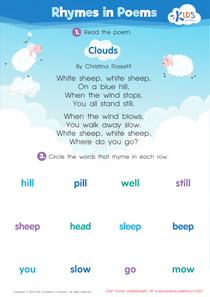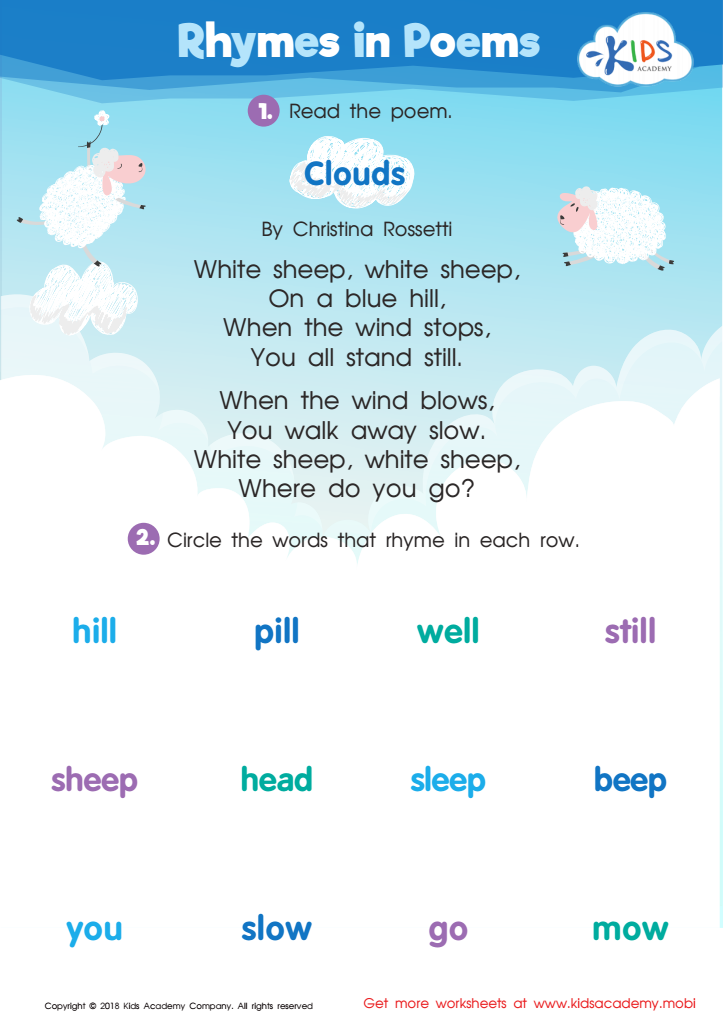Poetry - Lesson for Grade 2, Chapter - Review Across Genres
In the "Poetry" lesson, part of the Reading Literature unit titled "Review Across Genres," second-grade students will delve into the enchanting world of poetry. Through engaging activities such as the "Rhymes in Poems Worksheet," students will learn about the unique aspects of poetry, specifically focusing on the use of rhymes. They will explore how rhyming words create a musical rhythm in poems, enhancing the listener's or reader's experience.
Understanding rhymes is crucial as it helps students recognize patterns in words, which is fundamental to developing phonemic awareness—a key reading skill. This lesson will not only improve their reading fluency but also their ability to predict and generate rhyming words, an essential component of early literacy development.
This poetry lesson is important because it encourages creativity and self-expression. By appreciating the beauty and structure of poems, students will be more inclined to express their thoughts and feelings through writing. Additionally, the exposure to different poetic genres broadens their understanding of literature, fostering a lifelong love for reading and writing.
In summary, this lesson aims to equip second graders with the ability to recognize and appreciate rhymes in poetry, enhancing their literacy skills while igniting their creative passions.

-
Activity 1 / Rhymes in Poems Worksheet
Poems are beautiful pieces of literature that can be in rhyming lines or unrhymed lines. Poems for children; however, are usually written in rhyming lines to help the little ones understand and remember the lines better. The poem in this worksheet is simple and rhyming; talking about sheep. Read the poem carefully aloud to your kids, and make sure they are paying good attention to the rhyming words. At the end of the poem, ask your kids to circle the words among the options which rhyme in each row.

